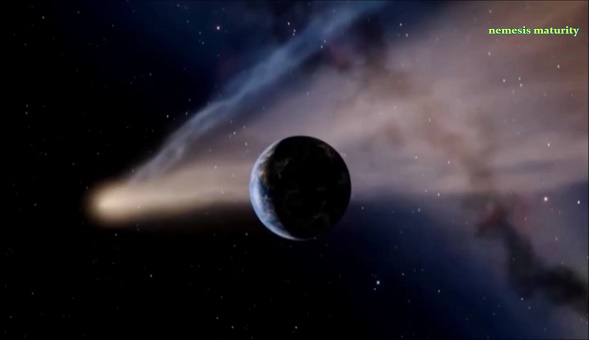

| Online: | |
| Visits: | |
| Stories: |

| Story Views | |
| Now: | |
| Last Hour: | |
| Last 24 Hours: | |
| Total: | |
Eyes On the Skies for New Year’s Eve Comets Currently Zooming Through the Inner Solar System (+Video)
New Year’s Eve sky show: Two bright comets currently zooming through the inner solar system will be so bright that we should be able to see it in the night sky with binoculars, and maybe even with the naked eye.
Comet 45P/Honda–Mrkos–Pajdusakova
Look for the comet 45P/Honda–Mrkos–Pajdusakova in the sky on New Year’s Eve. NASA says as we ring in the new year, a comet will near
the moon and be visible to those looking west.
Comet 45P/Honda-Mrkos-Pajdušáková, named after the astronomers who discovered it in 1948, takes 5.25 years to complete its orbit.
This year, it was first visible on the low western horizon
on December 15.
The comet’s maximum brightness will be about magnitude 6 — the equivalent of looking at a faint star with the naked eye.
It will reach its perihelion on New Year’s Day, making its orbit around the sun and disappearing from visibility from Earth.
It will be viewable, and reach its maximum brightness, once it swings back around the sun in 2017. The comet passes just 0.08 AU (7.4 million miles) from the Earth on February 11th.
CNN – Read more here: http://edition.cnn.com/2016/12/29/world/new-years-eve-comet/

Comet C/2016 U1 NEOWISE
A rare comet is zooming past Earth right now, and you should be able to see it with binoculars.
The comet was first detected by NASA’s NEOWISE mission in
October, and its trajectory is currently taking it on a safe pass
by Earth as it approaches the Sun. But as it zooms by, it should be so bright between now and January 14 that we’ll be able to see it using just binoculars, and maybe even with the naked eye.
According to David Dickinson at Universe Today, “comet C/2016 U1 NEOWISE is set to break binocular +10th magnitude brightness this week, and may just top +6th magnitude (naked eye brightness) in mid-January near perihelion”.
Magnitude brightness refers to how bright an object is in the night sky, and the lower the number, the better. For perspective, Venus is around –4.4 magnitude at maximum brightness ,and the Moon is –12.7 magnitude.
Comets are intrinsically unpredictable objects, and future magnitude estimates must always be taken with a pinch of salt. As they approach the Sun, they tend to heat up rapidly and quickly start shedding material in a glorious dust trail. This change in composition can rapidly change how visible the comets are in the night sky - sometimes they become brighter, and sometimes they go dark.
C/2016 U1 NEOWISE has already made its closest approach to Earth on December 13, at a distance of around 106 million km (66 million miles). This week, it’s around 140 million km (87 million miles) away as it approaches the Sun – around 350 times further away from us than our Moon.
ScienceAlert – Read more here: http://www.sciencealert.com/a-comet-is-zooming-past-earth-right-and-you-should-be-able-to-see-it-with-binoculars
Clips, images credit: ESO, ESA/HUBBLE & NASA


